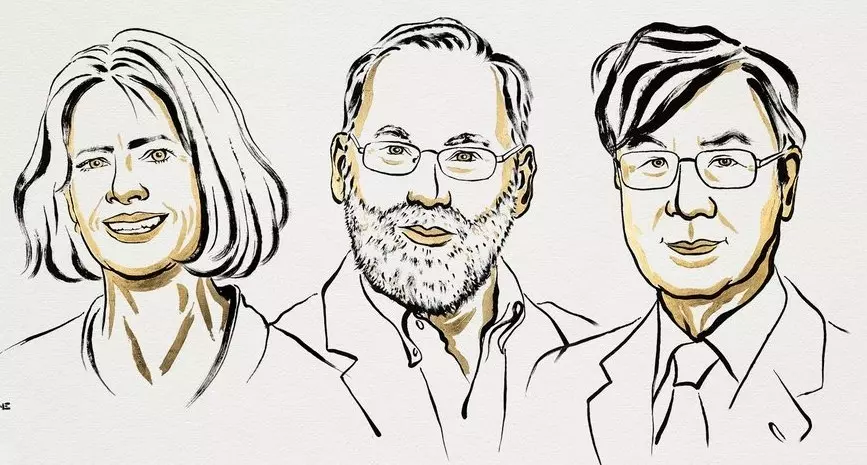
Mary E. Brunkow, Fred Ramsdell and Shimon Sakaguchi. They discovered how the immune system is kept in check. Illustration: Nobel
Nobel Prize in Physiology or Medicine 2025: Three scientists share honour
The laureates identified the immune system’s security guards, regulatory T cells, which prevent immune cells from attacking our own body

The Nobel Prize in Physiology or Medicine 2025 was awarded on Monday (October 6) to Mary E Brunkow, Fred Ramsdell and Shimon Sakaguchi "for their discoveries concerning peripheral immune tolerance".
They discovered how the immune system is kept in check.
Also read: Trump says denial of Nobel Peace Prize would be 'big insult' to US after 'ending 7 wars'
The laureates identified the immune system’s security guards, regulatory T cells, which prevent immune cells from attacking our own body.
What is the prize money?
The prize money of 11 million Swedish kronor (approximately Rs 10.36 crore) will be shared equally between the laureates.
“Their discoveries have been decisive for our understanding of how the immune system functions and why we do not all develop serious autoimmune diseases,” says Olle Kämpe, chair of the Nobel Committee.
Japan's Sakaguchi, from Osaka University, was swimming against the tide in 1995, when he made the first key discovery. At the time, many researchers were convinced that immune tolerance only developed due to potentially harmful immune cells being eliminated in the thymus, through a process called central tolerance. Sakaguchi showed that the immune system is more complex and discovered a previously unknown class of immune cells, which protect the body from autoimmune diseases.
Brunkow (Institute for Systems Biology, Seattle, USA) and Ramsdell (Sonoma Biotherapeutics, San Francisco, USA) made the other key discovery in 2001, when they presented the explanation for why a specific mouse strain was particularly vulnerable to autoimmune diseases.
Peripheral tolerance
They had discovered that the mice have a mutation in a gene that they named Foxp3. They also showed that mutations in the human equivalent of this gene cause a serious autoimmune disease, IPEX, the Nobel Committee said in a press release.
Two years after this, Sakaguchi was able to link these discoveries. He proved that the Foxp3 gene governs the development of the cells he identified in 1995. These cells, now known as regulatory T cells, monitor other immune cells and ensure that our immune system tolerates our own tissues.
The laureates’ discoveries launched the field of peripheral tolerance, spurring the development of medical treatments for cancer and autoimmune diseases. This may also lead to more successful transplantations. Several of these treatments are now undergoing clinical trials.

